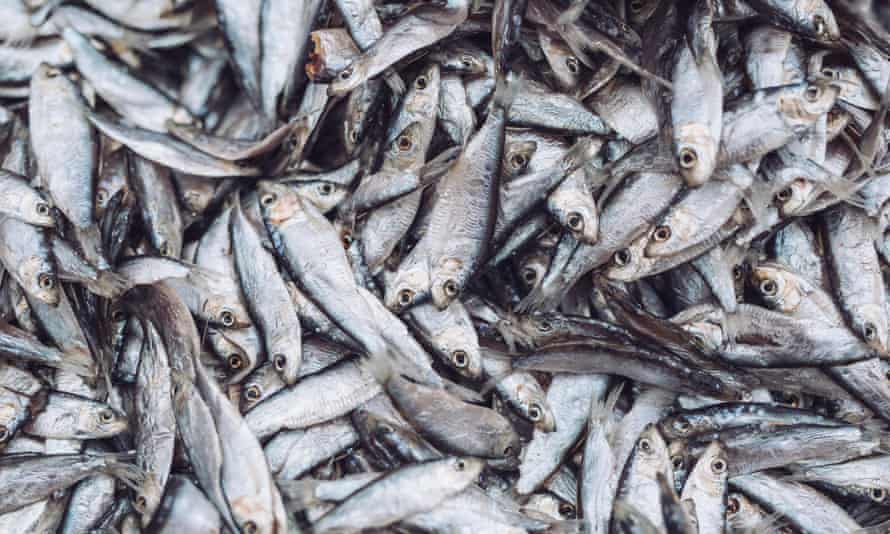Clyde’s fish stocks start to recover – with a different fish than before
Banning fishing does not mean populations simply bounce back, as scientists found off Scotland’s west coast

Last modified on Thu 7 Oct 2021 02.52 EDT
The closure of the Clyde fishery has led to the recovery of marine species – but not the same species as lived there before, according to a report.
Published in the journal Current Biology, the paper found the marine ecosystem of west Scotland’s Clyde Sea shows signs of recovery after a reduction in fishing pressure, but with sprat now the dominant species instead of herring.
Scientists say it is an example of how simply reducing fishing does not necessarily mean commercial fish stocks will return to their same pre-exploitation levels, and that restorative actions may have unintended consequences.
The paper’s authors describe the Firth of Clyde as “one of the most anthropogenically impacted marine environments in the world”. For hundreds of years, it was famed for its abundance of herring. But an intense fishing industry from the mid-19th century depleted fish stocks and was eventually closed. Since 2008, langoustine (Nephrops norvegicus) has been the main commercial catch.

Without any of the pressures of commercial fishing, researchers found that the biomass of pelagic forage fish – such as herring and sprat, prey for predators including marine mammals and larger fish – is now four times greater than it was in the 1980s. But where herring was the dominant species then, now it is sprat.
The paper’s lead author, Dr Joshua Lawrence, said: “We’ve seen no recovery in the herring stock, as one would normally hope for following a reduction in fishing pressure. Instead, we have seen a huge increase in the biomass of sprat in the area.”
It is possible that sprat populations increased due to the lack of competition from herring, to the point where herring could not recover even when the fishing stopped. The authors suggest possible other factors may include warming seas, or the fact that herring need undisturbed gravel beds to spawn, whereas sprat do not.
Meanwhile, those fish that have been less well protected – such as demersal fish, or groundfish, such as cod and haddock – have not seen the same increase in biomass as the pelagic species. Prof Anthony Gallagher, who chairs the Clyde Marine Planning Partnership, said: “These are still heavily caught as bycatch in the nephrops fishery and almost entirely discarded at sea.”
Another instance of a fishing moratorium that led to the recovery of an unexpected species is North Atlantic cod. Generally, stocks have not recovered despite fishing closures – but on the Georges Bank, off the north-east US, an attempted cod recovery led to a (very lucrative) 14-fold increase in scallop biomass.

Moreover, in Europe, reduced fishing pressure designed to rebuild hake stocks led to a massive increase in the species, which expanded into the North Sea, where they had been mostly absent for 50 years. This change may affect the future of mixed demersal fisheries, which have low quotas for hake.
Lawrence said: “Sometimes management interventions can have unexpected consequences, most likely due to unforeseen ecosystem interactions and processes. These can be hard to predict, and may vary greatly from one system, or even species, to another.”
Because reducing fishing pressure is not always successful, the most important thing, Lawrence said, was “ensuring stocks do not become overexploited in the first place”.
There is no sprat fishery around the Clyde, but the authors suggest a more sustainable industry may be ecotourism, specifically whale watching.
Prof Joshua Abbott, an environmental economist at Arizona State University, said that while ecotourism was a viable option, the income opportunities and employment may not match those offered by fishing, and he pointed to the seasonal nature of ecotourism as a possible restriction.
If sustainable fishing could operate alongside tourism, he added, no-take zones would help avoid conflict between the two industries. “Those considering alternative economic futures in a region need to consider these complex realities,” he said.
